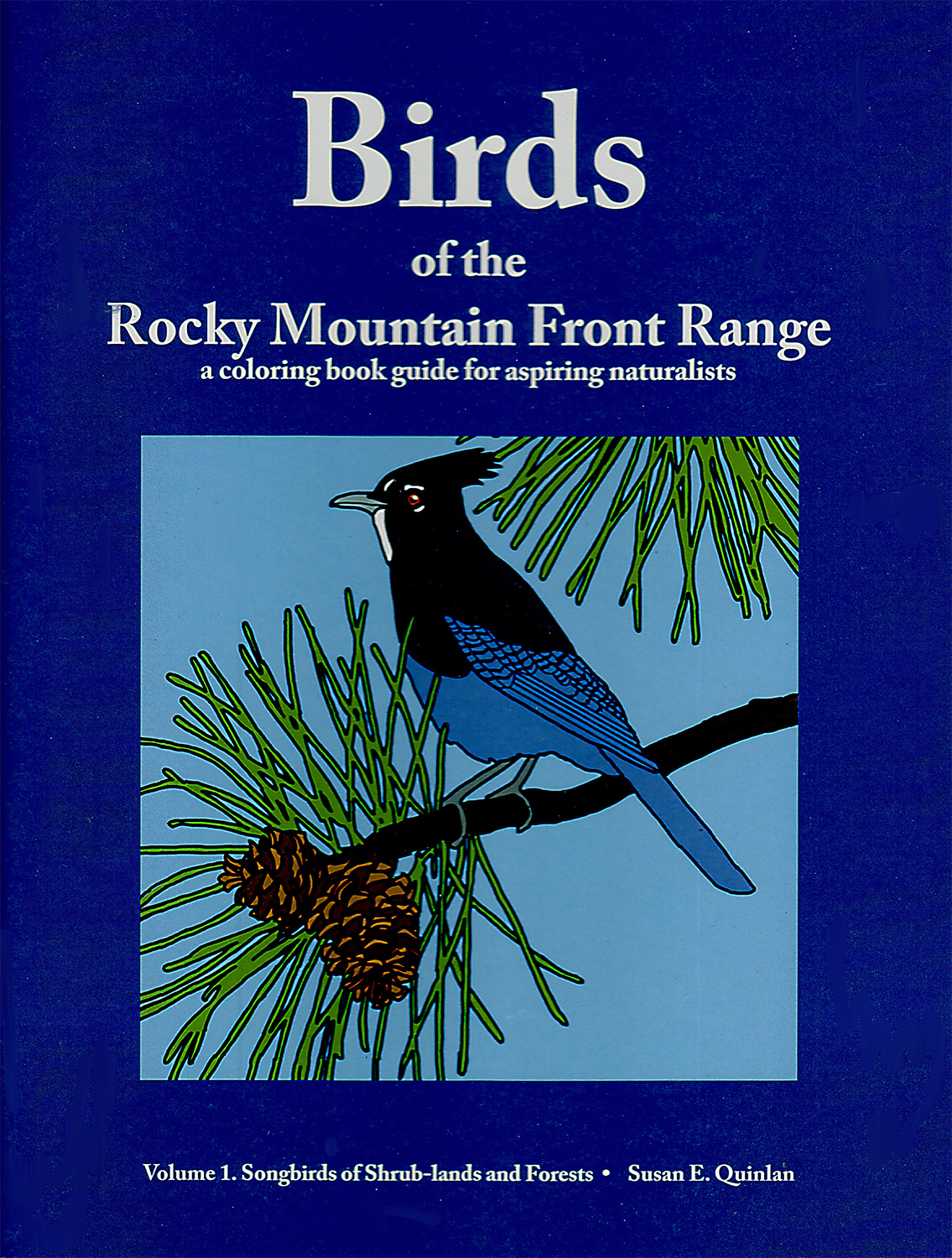
15% Discount on books, cards, and art from my online store.
No worries!! I'll only send occasional updates. And I promise to never share your email address with anyone for any reason.

No worries!! I'll only send occasional updates. And I promise to never share your email address with anyone for any reason.
Winter has never been my favorite season, nor snow and cold something I have celebrated much. Yes, wintery scenes of snow, frost, and ice are beautiful and I have wonderful memories of skiing, snowshoeing, and sledding in snow-frosted landscapes. I also have had the great good fortune to explore places in both polar regions of Earth and been awestruck by the incredible beauty and remarkable life adapted to these icy cold environs.
Still, though I lived in, and loved, subarctic Alaska for over 30 years, I have never particularly enjoyed the cold or the season. In the depths of some Fairbanks January, many years back, when air temperatures plummeted below -50*F, I must admit to thinking perhaps a little global warming would not be such a bad thing.
Today, however, as the warming of Earth’s climate spirals upward, I am keenly aware that winter, snow, and cold are not inconveniences to endure, but rather precious gifts from nature we must treasure and, however possible, protect.
19 of the last 20 years are the warmest on record per the U.S. National Oceanic and Atmospheric Administration (NOAA).
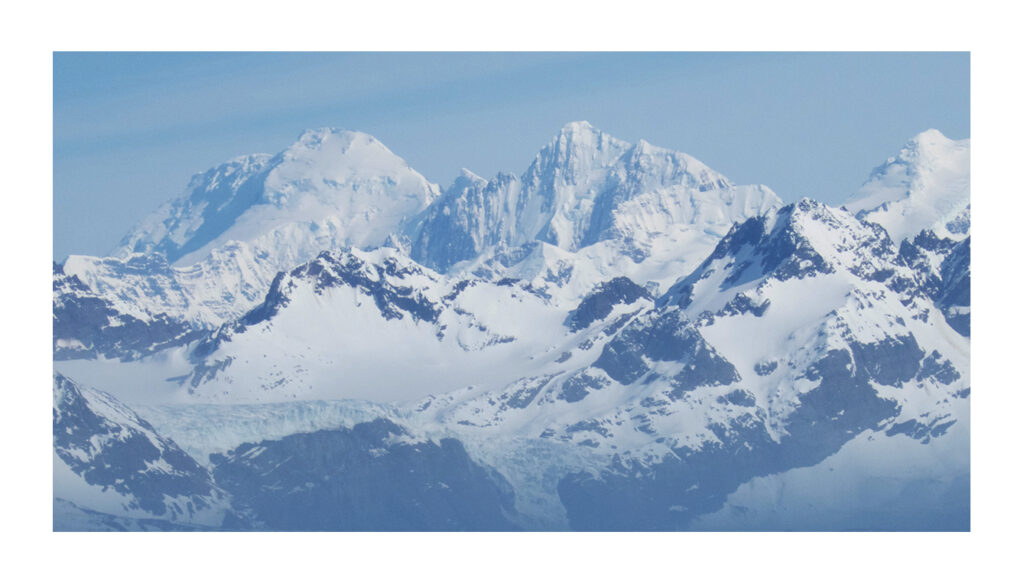
Snow-capped peaks, South Georgia Island. (Photo © Susan Quinlan)
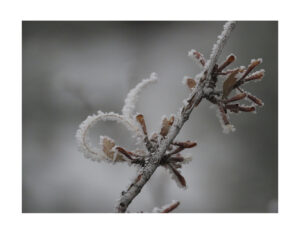
Hoar frost on a Mountain Mahogany (Photo: © Susan Quinlan)
Look around our winter-blessed planet and notice the soul-filling beauty of distant snow-capped mountains, the crystalline beauty of snowflakes and frost-encrusted plants, the quiet peace of snow-draped forests,
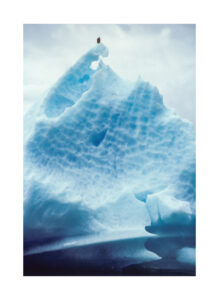
Bald Eagle on grounded iceberg, Tracy Arm, Alaska (Photo © Susan Quinlan)
the existence of immense glaciers and the magnificent icebergs they spawn.
Perhaps a desire to maintain all these features of our natural world should be enough for any, and all of us, to see a benefit in keeping our planet just chilly enough to ensure future generations will be able to experience and enjoy these beautiful, awe-inspiring scenes.
But we must also consider all the life that requires snow and winter cold for survival. Our world will be far less rich if our warming climate decimates Earth’s icy polar regions or brings an end to winter’s snow and ice.
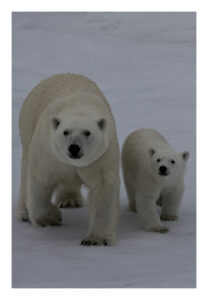
Polar bear sow and cub, Svalbard, Norway (Photo © Bud Lehnhausen)
As our planet warms and winter shrinks, creatures adapted to its predictable features may not survive. Ice worms are the only animal I know of that actually lives in ice, but there are hundreds of species that require ice and snow.
Most of us know the future of polar bears is tenuous at best. But they are far from alone in facing a very uncertain future.
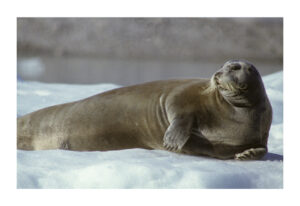
Bearded Seal on pack ice, Svalbard, Norway. (Photo © Susan Quinlan)
A whole host of arctic and antarctic seals haul out on and raise their pups on pack ice which must be thick and strong enough to support them. Scattered thin ice won’t do. The extent of sea ice has been shrinking 12 percent every decade since measurements began in 1979. In 2020 even water at the North Pole was ice free in mid-winter.
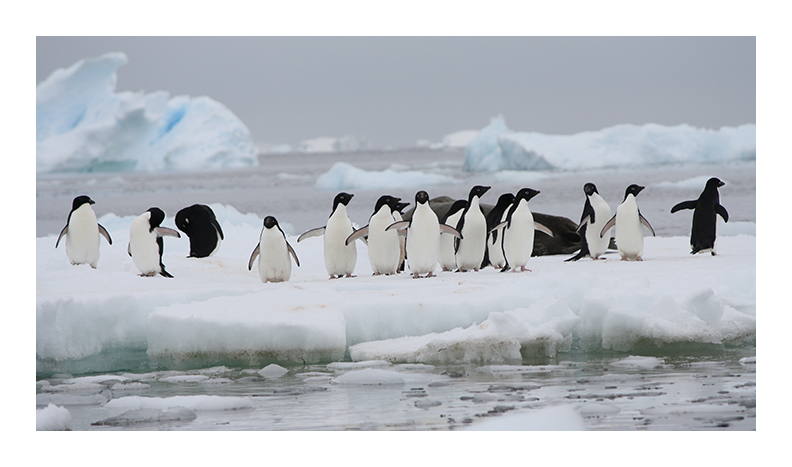
Adele Penguins on ice in Antarctica. (Photo © Bud Lehnhausen)
Most penguin species are adapted to a world dominated by snow, ice and cold temperatures. Their downy young are adapted to survive severe cold and bitter winds. Sadly, warm temperatures and melting ice are already turning some of their lively nesting grounds into wet, muddy deathtraps. Scientists recently reported a worrisome fifty percent drop in the numbers of chinstrap penguins at one Antarctic colony (Audubon).
Cold waters contain more oxygen and nutrients than warm waters, so polar oceans are rich with marine live. Many fish and invertebrate species—the base of all polar food chains—require icy cold waters to survive. As oceans warm, fish like pollack—which currently sustain the largest remaining ocean fishery in the world, are being forced northward by warming seas. Normally resident in the southern Bering Sea, there is not that much ocean north of their current range for their still teaming numbers to move into.
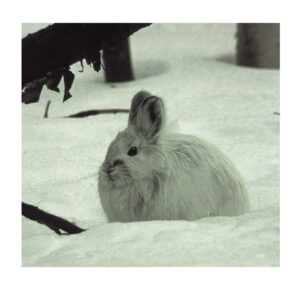
Snowshoe Hare in snow. (Photo ©Susan Quinlan)
Many land-dwelling animals are threatened by our planet’s changing climate too. Think of those like the ptarmigan, arctic fox, snowshoe hare that change their coats from summer brown to winter white. Where will they hide when the snow does not predictably return on time to their habitats each winter, or melts off too soon? Their winter adaptations then turn to liabilities—making them more vulnerable to predators.
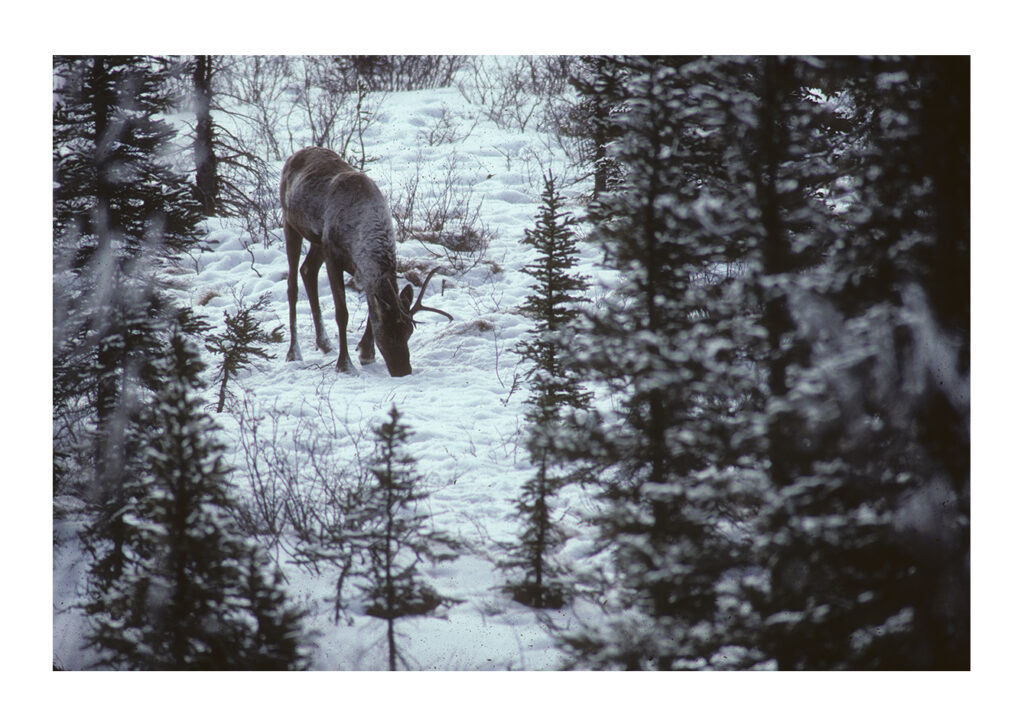
Caribou can dig through snow to find food. (Photo © Bud Lehnhausen)
One might imagine that a milder climate would make life easier for many tundra animals to survive the harsh winter. instead, warmer temperatures threaten their very existence. Caribou have large hooves that enable them to travel hundreds of mile across the tundra and dig through snow to reach the lichens and miniature tundra plants that sustain them. These days however, midwinter rains are turning wind-crusted snow into impenetrable sheets of ice.
A rain on snow, or ROS event as scientist call it, killed off 61,000 reindeer in Siberia in November 2013. All these majestic arctic animals died of starvation due to rainfall in the season of snow.
ROS events are also deadly for animals (and plants) that survive winters in the subnivean environment beneath winter snows. Collared lemmings have specially adapted claws that act like shovels to help them tunnel through soft or crusty arctic snow. These lemmings are so well adapted for tundra winters, they raise their young in this harsh season. But their tiny claw shovels are no match for ice.
An icy coating on the snow surface can also spell starvation for predatory birds and mammals that subsist on lemmings, voles, and other creatures that live under winter snows. A great gray owl can pinpoint and capture a small vole scampering beneath two feet of soft snow. It can not extract one from beneath even a few inches of ice-crusted snow.
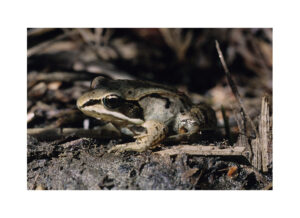
A wood frog can survive freezing, but it still needs snow. (Photo © Bud Lehnhausen)
Have you heard of the wood frog? This remarkably cold-adapted creature survives winter by tunneling into the leaf litter, then freezing solid—essentially turning into a frog popsicle. Even so, wood frogs need a blanket of snow to survive. If the snow melts, or turns into a less insulative layer of ice, allowing temperatures around a frozen frog to drop below 8*F—the wood frog does not survive. Similarly, if the ground warms enough to thaw a frog out before winter’s end, the frog will die of starvation, or of the cold itself, as a wood frog can’t survive a second freeze in the same season.
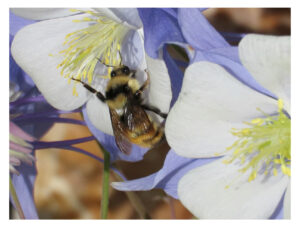
Populations of some pollinators are declining due to our warming climate. (Photo © Susan Quinlan)
Scientists can’t predict the consequences of a warming climate on all Earth’s millions of species, but likely most are being affected in some way. Scientists have noticed that our warming climate is already harming some important pollinator species. Warming temperatures alone pose a survival threat to bumblebees and butterflies because they are vulnerable to overheating. Winter warm spells can also cause their eggs, larvae, or over-wintering adults to thaw out mid-winter, or emerge before winter’s true end. Development of adults or larvae out of sync with the spring appearance or flowering of a pollinator species’ preferred food plants is likely to cause declines of many pollinator populations. Since one third of all the plants we humans eat depend on pollinators to produce seeds and fruits, declines in pollinator populations threaten our own food supplies.
Some invertebrate species are benefiting from warming trends, however. Due to warmer fall and winter seasons, more pine bark beetles are surviving winters and their populations are expanding northward into forests which they didn’t occupy previously. Growing expanses of dead and dying trees in the forests of the mountain west, Canada, Alaska and Siberia are one consequence. While most trees can tolerate low numbers of beetles, they are unable to survive the intensity of attacks from invading and exploding beetle populations. Some scientists think these vast areas of beetle-killed trees are part of the reason that wildfires have become more frequent and more destructive in the western United States in recent years.
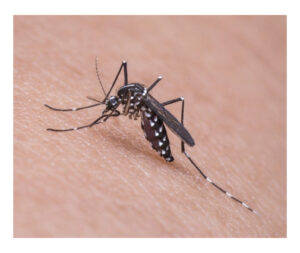
Certain mosquito populations are expanding into new regions and their populations are increasing due to warming climates. (Photo by mika mamy at Pixabay)
Populations of several agricultural insect pests, as well as disease-carrying ticks and Asian tiger mosquitoes, are also spreading into new regions and have increasing populations due to Earth’s warming climate. Increasing numbers of these pests pose dangers to humans, including lower crop yields and increasing incidence of arthropod-borne diseases like lyme disease, dengue fever, and malaria.

Many migratory songbird populations are declining, due in part to climate change. (Lark Sparrow with grasshopper. Photo © Susan Quinlan)
Invertebrates have comparatively short life cycles and many species may be able to adapt quickly to shorter, warmer winters. Many kinds are already emerging earlier each spring due to warming temperatures. This rapid change in the phenology of insect populations threatens to reduce the nesting success and survival of migratory birds, in particular. Ninety percent of migratory songbirds time their migrations and nesting to coincide with summer peaks in insect numbers. This is critical to enable these birds to catch enough insects to feed their young. As the cold and snows of winter dwindle, the peak abundance of insects is getting out of sync with the timing of bird migrations and nesting cycles. Other insect-eating animals, from shrews to frogs, lizards to fish, will also be affected by changes in the populations of what E. O. Wilson appropriately named “the little things that run the world.”
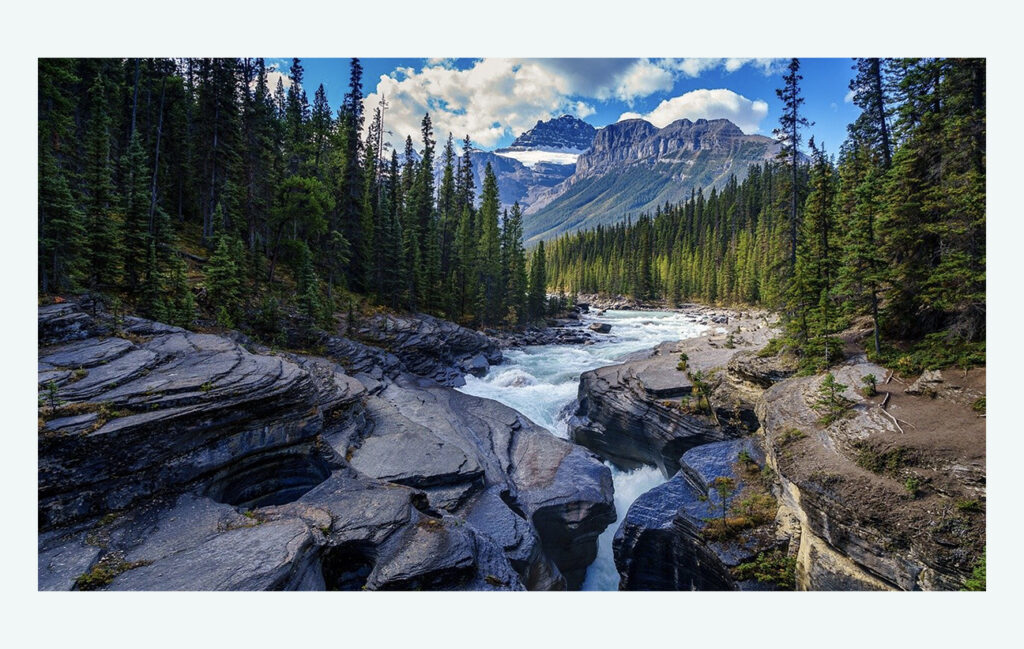
Mountain snow and ice are a critical source of freshwater. (Image by Jörg Vieli from Pixabay)
Natural scenes of beauty and cold-adapted wildlife are not the only losses facing us on a warming planet. We ourselves are threatened, too. Those ice-capped peaks we admire are a critical source of freshwater. The snows of the Himalayas alone deliver water to 1.5 billion people. The ice fields of the Andes feed not only the mighty Amazon River, but hundreds of other smaller rivers that deliver water to 10 million people and to agricultural areas that feed even more.
The Colorado River, fed by winter snows in the Rocky Mountains, is the source of water for 30 to 40 million people and irrigation for 6 million acres of agriculture in both eastern Colorado and southern California. The mighty Colorado could lose about one-fourth of its water flow by 2050 as temperatures continue to climb. Already all of its water is drained away for human uses so the water carried by this great river no longer flows into the sea.
Ironically, as our rivers dry up, warming of polar regions is melting the massive ice reserves of Greenland and Antarctica. As these rapidly disappear, the water they once held is being released to our oceans—causing sea levels to rise worldwide. You may not personally feel threatened by sea level rise if you live inland, but a rising tide of people migrating inland to escape the advancing ocean will affect us all, no matter where we live.
Alarmingly, scientists warn that feedback loops in nature threaten to rapidly exacerbate the rate at which Earth’s climate is warming. Snow and ice help keep the Earth’s temperature cooler, because they reflect sunlight heat rather than absorbing and trapping it like water, rocks and soil. As snow cover and pack ice disappear, arctic lands and waters will warm ever more quickly.
In addition, a warming climate threatens to release millions of tons of CO2 and methane that, at present, are inertly stored in the nine million square miles of northern lands underlain by permafrost — the “permanently” frozen ground of arctic regions. Over tens of thousands of years, tundra plants captured sunlight energy and carbon dioxide from the air to grow their roots, leaves, and flowers. From these millennia of photosynthesis, huge stores of formerly atmospheric carbon have been trapped in the organic matter these plants produced.
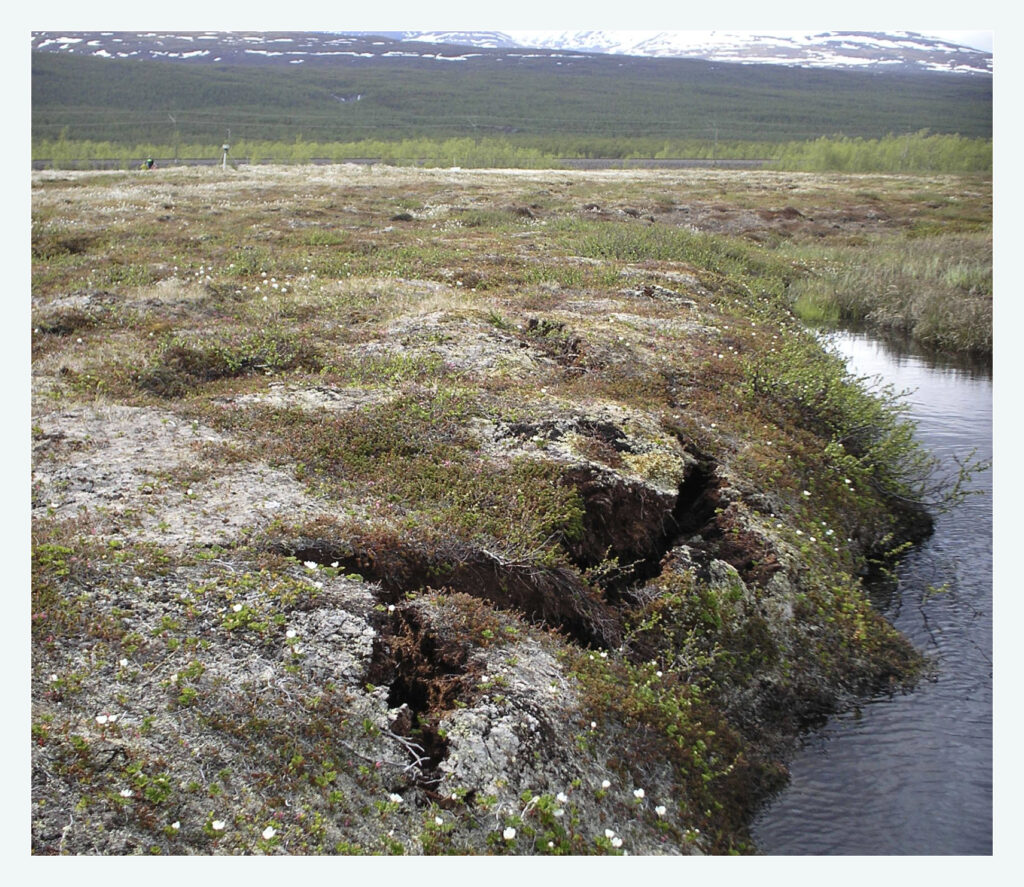
Melting permafrost threatens the release of gigatons of CO2, as well as stores of frozen methane. (Photo by Dentren at English Wikipedia, CC BY-SA 3.0, https://commons.wikimedia.org/w/index.php?curid=8016884)
As our climate warms and permafrost melts (as it is already), bacteria, fungi, and soil invertebrates at long last have the opportunity to decompose this vast storehouse of organic material. In doing so, they will release all that stored carbon back to the atmosphere as carbon dioxide— dangerously adding to all that we humans have already released and continue to add by burning fossil fuels.
Even more ominously, scientists have found large deposits of frozen methane (a gas produced during decomposition in low oxygen situations) trapped in the permafrost. As the ground and northern waters warm, this frozen methane is starting to bubble-up from arctic lakes and the ocean floor. In August 2020, Siberian scientists found a 165 deep hole in the tundra apparently caused by an explosion of thawed methane from underground. In the atmosphere, methane is 21 to 36 times more effective at trapping heat than carbon dioxide.
Atmospheric CO2 levels are already higher now than at any time in the last 800,000 years. Source: Nasa
Clearly, the combined effects of rising CO2 and methane releases due to continued warming and thawing of polar regions could rapidly exacerbate the greenhouse effect that is already leading to a dangerous warming of Earth’s climate.
Considering all these facts, and many others I am still learning about, the consequences of losing winter seem far more chilling to me than the season. As Judy Collins famously sang, “You don’t know what you’ve got til it’s gone.” I don’t suppose I will ever truly enjoy numb fingers, a nose nipped by icy cold, or dangerous winter roads, but I now clearly understand that winter is a necessity and a blessing—a season to enjoy, savor, and protect.
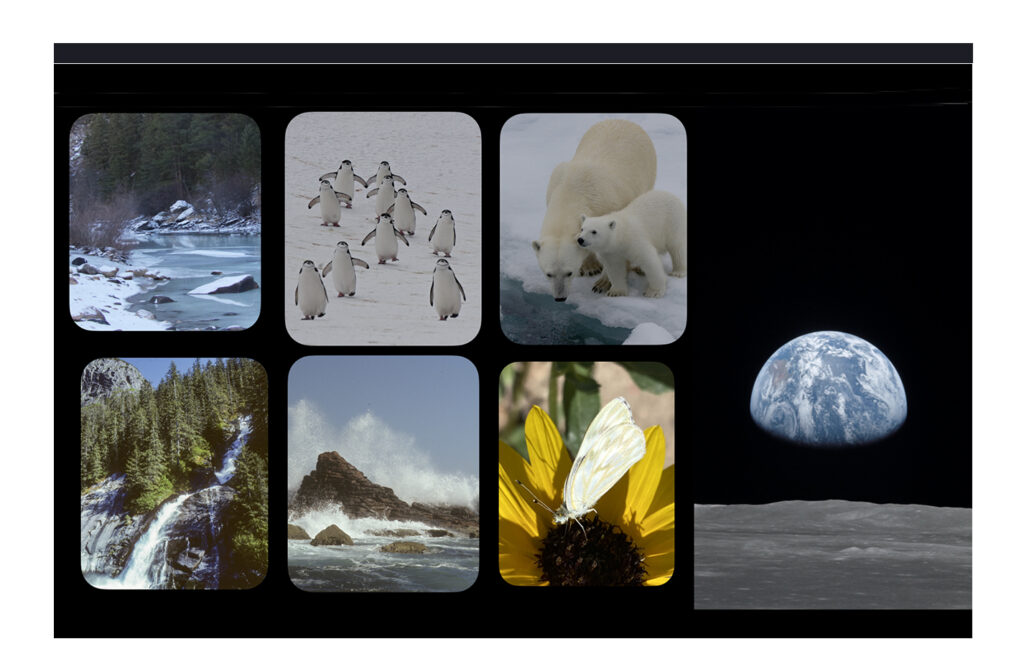
We need winter! Our Earth needs winter! (Photos by NASA, Susan Quinlan, Bud Lehnhausen)
We must all learn to treasure and protect winter for its beauty. for all the remarkable animals and plants that require it. for its provision of water, its maintenance of our rivers and seacoasts, and for all the ways it helps stabilize Earth’s climates. Lest we lose all that winter cold and snow provide and maintain, we must each act quickly and do whatever we can to slow the warming of our planet.